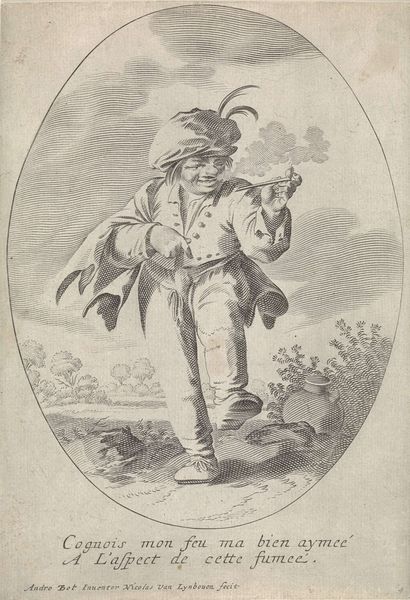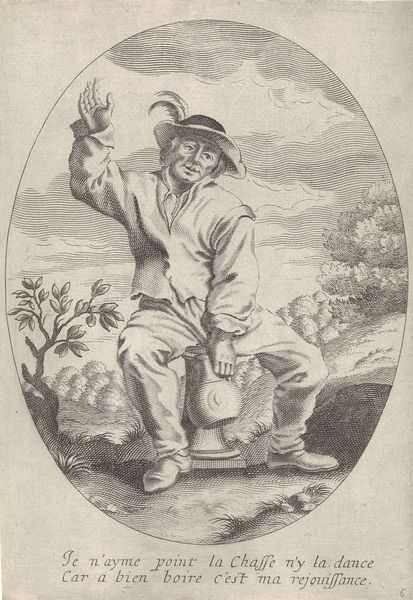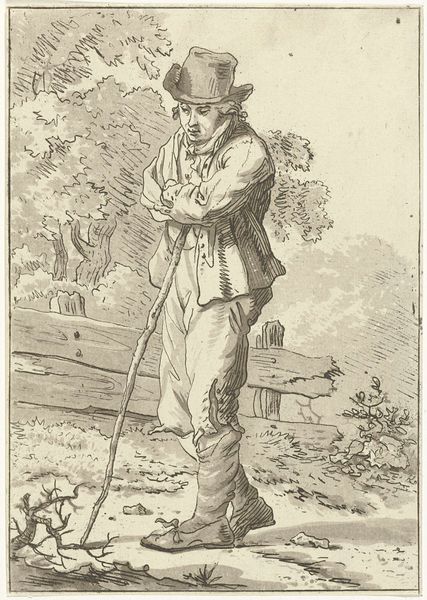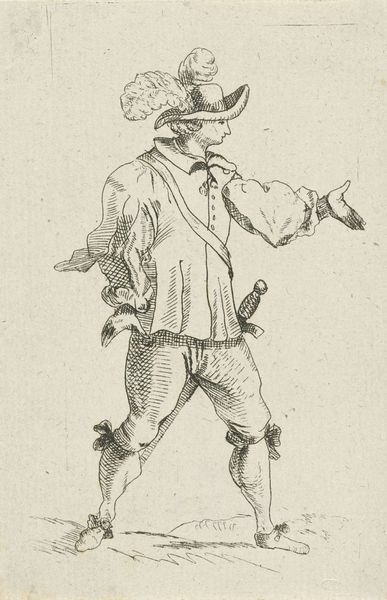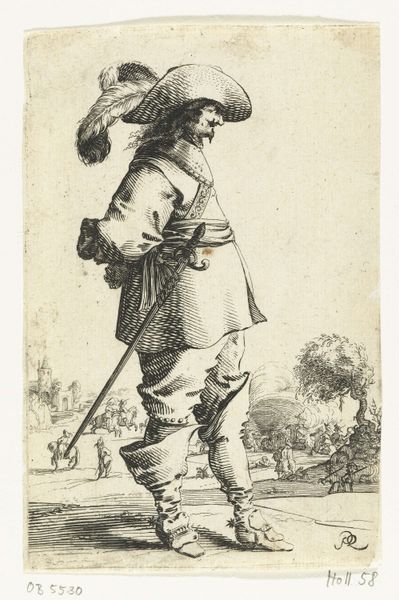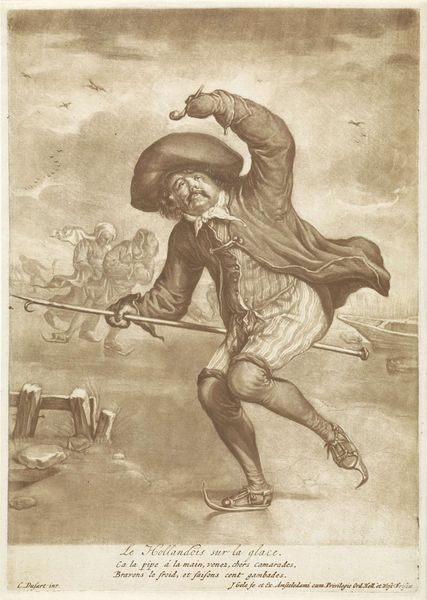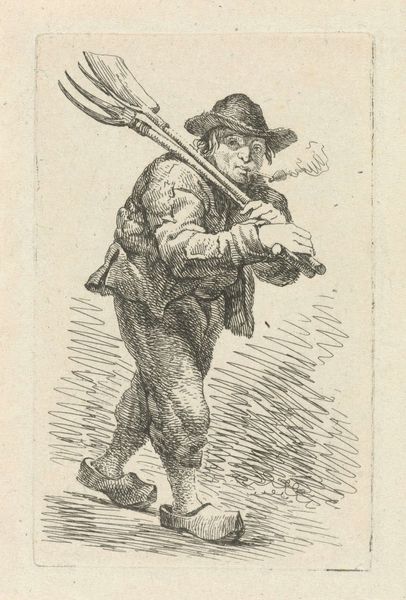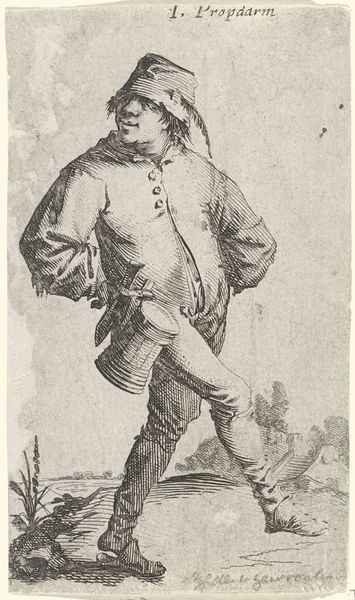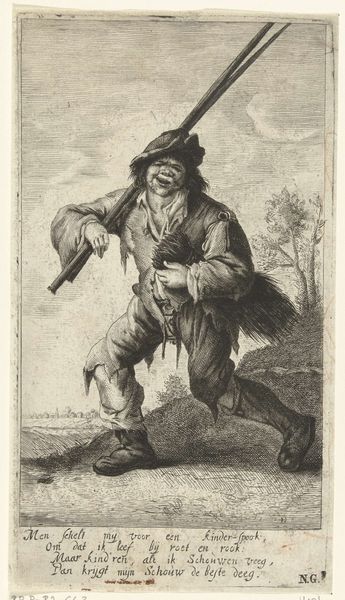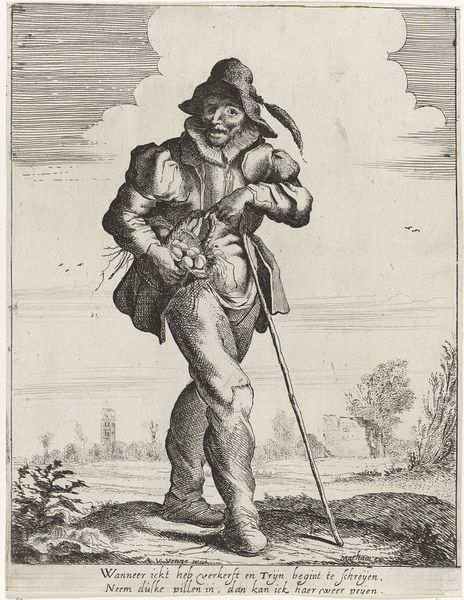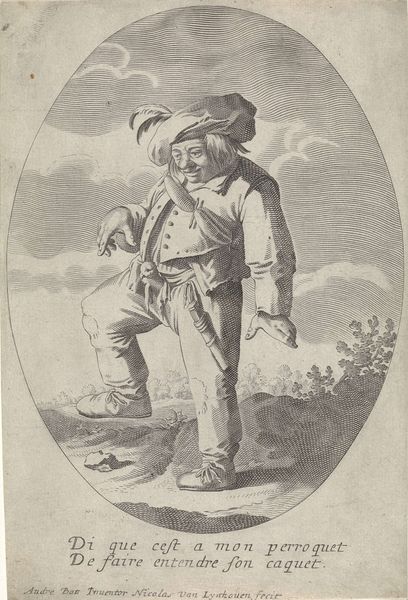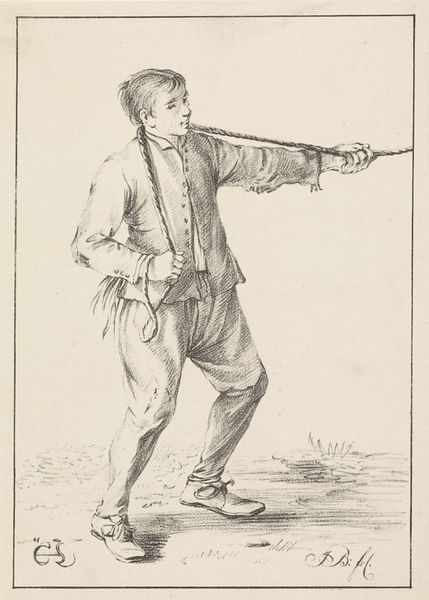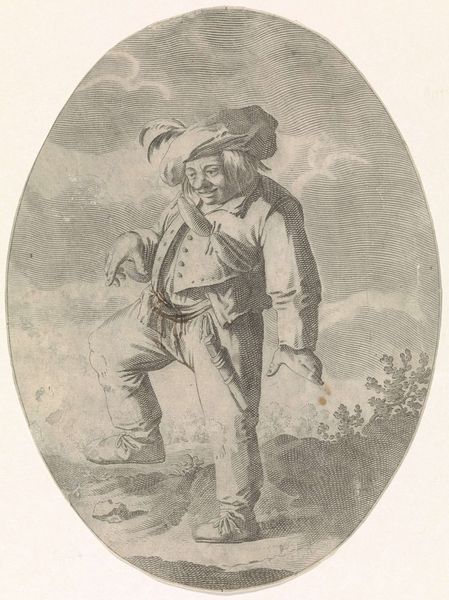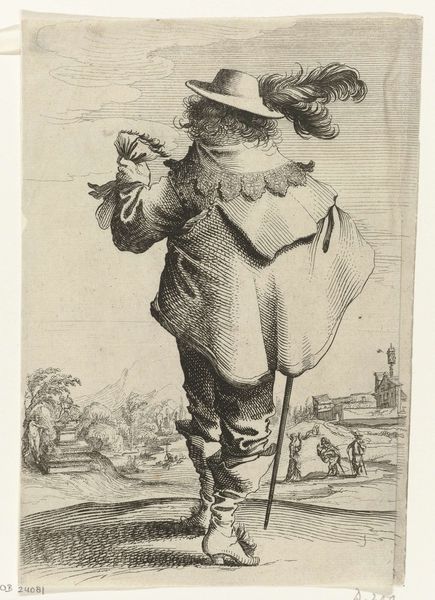
print, engraving
#
quirky sketch
#
baroque
# print
#
caricature
#
old engraving style
#
figuration
#
genre-painting
#
sketchbook art
#
engraving
Dimensions: height 210 mm, width 145 mm
Copyright: Rijks Museum: Open Domain
Curator: Here we have a print called "Dansende boer, obsceen gebaar makend"—Dancing Peasant, Making an Obscene Gesture—which scholars date somewhere between 1622 and 1668, attributed to Nicolaes van Lijnhoven. It's an engraving, a very baroque, figural genre painting of a, shall we say, spirited gentleman. Editor: Okay, spirited is… polite. My first thought? He looks like he’s had a bit too much celebratory beer, teetering on the edge of… decorum. The smirk is classic, isn't it? That sideways glance... total mischief. Curator: Indeed. These genre scenes, especially caricatures, give us a glimpse into the socio-political landscape of the time. The “obscene gesture” is quite loaded; these acts of defiance against societal norms, even simulated ones in art, were ways to subtly critique authority. He might represent the frustrations of the working class. Editor: Or maybe just Bob being Bob after market day! I mean, look at the detail in that floppy hat and the way he’s hiked up his britches. He's got a swagger! Though I can't help but wonder if the engraving is slightly mocking? There is an oval framing the action in what seems to be a casual scene. Curator: I read this action as critique of a performative masculinity that relies on vulgarity and overt displays of power. The gesture itself and implied proposition is interesting considering gender and class dynamics. What would the man lose if this gesture failed? It’s not only a personal risk, it may have an implicit impact on all of his peers, or "class" fellows. Editor: That’s a thought. And I'm left with that bit of text at the bottom there which loosely translated means "... she prefers my bird." So vulgarity and gender trouble? Right. Curator: The inclusion of text under a design can invite varying reactions. Its addition invites discussion surrounding what is included, as well as what is excluded from these dialogues of gender, class, and social power. Editor: True. Overall, the print, in all its rude charm, speaks volumes about freedom, defiance, maybe even joy, though perhaps within constraints we easily forget existed. A funny, and deeply fascinating piece, all around. Curator: It offers a small, but dense focal point to study history as experienced from very different points on the socio-political landscape of that time.
Comments
No comments
Be the first to comment and join the conversation on the ultimate creative platform.
